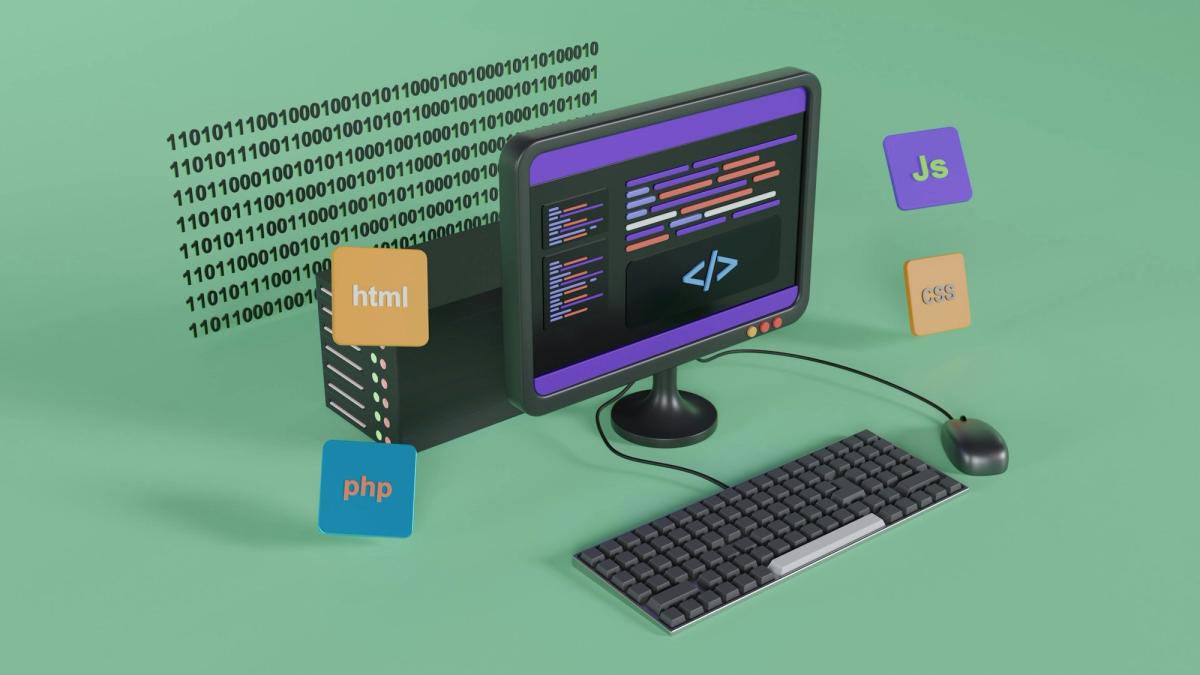A Guide to Monitoring ML Models in Production for Reliable AI
Published on May 20, 2025
Get Started
Fast, scalable, pay-per-token APIs for the top frontier models like DeepSeek V3 and Llama 3.3. Fully OpenAI-compatible. Set up in minutes. Scale forever.
As machine learning models transition from development to production, their performance can degrade. This often occurs without noticeable signs, resulting in unexpected failures that can wreak havoc on business operations. Monitoring ML models in production helps you ensure their performance remains stable and aligned with current business goals. This article will help you get started with monitoring models to avoid degradation and achieve your objectives. AI Inference APIs from Inference provide a valuable way to help you monitor ML models in production. These tools can help you keep track of your model’s performance over time and alert you to any anomalies that could indicate a degradation in performance.
What is ML Model Monitoring?

Model monitoring is the ongoing process of tracking, analyzing, and evaluating the performance and behavior of machine learning models in real-world production environments. It involves measuring various data and model metrics to help detect issues and anomalies and ensure that models remain accurate, reliable, and effective over time.
Why Monitoring ML Models in Production Is Crucial
Building a machine learning model is just the beginning. Once you deploy that model into the real world, it faces many challenges that can affect its performance and require continuous monitoring. Here are some examples of issues that can affect production ML models:
Gradual Concept Drift
Gradual concept drift refers to the ongoing changes in the relationships between variables or patterns in the data over time. These changes may ultimately lead to a degradation in the model's quality. Consider a product recommendation system: as user preferences evolve, what was relevant last month might not be today, impacting the quality of the model's suggestions.
Sudden Concept Drift
Sudden concept drift, in contrast, involves abrupt and unexpected changes to the model environment that can significantly impact its performance. This might be, for instance, an external change such as the outbreak of COVID-19 or an unexpected update to a third-party application that disrupts data logging and, in turn, makes your model obsolete.
Data Drift
Data distribution drift occurs when the statistical properties of the input data change. An example could be a change in customer demographics, resulting in the model underperforming on a previously unseen customer segment.
Data Quality Issues
Data quality issues encompass a range of problems related to the input data's accuracy, completeness, and reliability. Examples include missing values, duplicate records, or shifts in the feature range: imagine milliseconds replaced with seconds. If a model receives unreliable inputs, it will likely produce unreliable predictions.
Data Pipeline Bugs
Many errors occur within the data processing pipeline. These bugs can lead to data delay or data that doesn't match the expected format, causing issues in the model performance. For instance, a bug in data preprocessing may result in features having the wrong type or not matching the input data schema.
Adversarial Adaptation
External parties might deliberately target and manipulate the model's performance. For example, spammers may adapt and find ways to overcome spam detection filters. With LLM models, malicious actors intentionally provide input data to manipulate the model outputs, using techniques such as prompt injection.
Broken Upstream Models
Often, a chain of machine learning models operates in production. If one model gives wrong outputs, it can propagate downstream, leading to a drop in model quality in the dependent models.
Quantifying the Business Impact of Inaccurate Predictions
If these issues occur in production, your model could produce inaccurate results. Depending on the use case, getting predictions wrong can lead to a measurable negative business impact. The risks vary from lost revenue and customer dissatisfaction to reputational damage and operational disruption. The more crucial a model is to a company's success, the greater the need for robust monitoring.
Goals of Monitoring ML Models in Production
A robust model monitoring system helps mitigate the risks discussed in the previous section and offers additional benefits. Let’s take an overview of what you can expect from ML monitoring:
Issue Detection and Alerting
ML monitoring is the first line of defense that helps identify when something goes wrong with the production ML model. You can alert on various symptoms, from direct drops in model accuracy to proxy metrics like increased share of missing data or data distribution drift.
Root Cause Analysis
Once alerted, well-designed monitoring helps pinpoint the root causes of problems. For example, it can help identify specific low-performing segments the model struggles with or help locate corrupted features.
ML Model Behavior Analysis
Monitoring helps gain insights into how users interact with the model and whether there are shifts in its operational environment. This allows you to adapt to changing circumstances or find ways to improve the model's performance and user experience.
Action Triggers
You can also use the signals a model monitoring system supplies to trigger specific actions. For example, if performance falls below a certain threshold, you can switch to a fallback system, or a previous model version, or initiate retraining or data labeling.
Performance Visibility
A robust model logging and monitoring system enables recording the ongoing model performance for future analysis or audits. Additionally, having a clear view of the model operations helps communicate the model's value to stakeholders.
Related Reading
Why is Monitoring ML Models in Production So Hard?

There is an established practice of tracking software health and product performance; how is ML model monitoring different? Is it possible to use the same methods? While it is partially true that you must monitor the software system's health, model monitoring addresses a particular set of challenges, which makes it a separate field.
Firstly, you focus on different groups of metrics, such as model and data quality metrics. Secondly, you compute these metrics and design your model monitoring differently. Let's explore some of these challenges.
Silent Failures
Software errors are usually visible. If things don’t work, you will get an error message. With machine learning, you may encounter different types of errors: a model returning an unreliable or biased prediction. Such errors are “silent”: a model will typically respond as long as it can process the incoming data inputs.
Even if the input data is incorrect or significantly different, the model will make a potentially low-quality prediction without raising an alarm. To detect such "non-obvious" errors, you must evaluate model reliability using proxy signals and design use-case-specific validations.
Lack of Ground Truth
In a production ML environment, it is typical for feedback on model performance to be delayed. Because of this, you cannot measure the true model quality in real time. For example, if you forecast sales for the next week, you can only estimate the actual model performance once this time passes and you know the sales numbers.
To evaluate the model quality indirectly, you need to monitor the model inputs and outputs. You also often need two monitoring loops: the real-time one that uses proxy metrics and the delayed one that runs once the labels are available.
Relative Definition of Quality
What's considered good or bad model performance depends on the specific problem. For instance, a 90% accuracy rate might be an excellent result for one model, a symptom of a huge quality issue for another, or simply a wrong choice of metrics for the third one. In addition, there is inherent variability in the model performance.
This makes it challenging to set clear, universal metrics and alerting thresholds. You will need to adjust the approach depending on the use case, cost of error, and business impact.
Complex Data Testing
Data-related metrics are often sophisticated and computationally intensive. For example, you could compare input distributions by running statistical tests. This requires collecting a significant batch of data and passing a reference dataset. The architecture of such an implementation significantly differs from traditional software monitoring, where you expect a system to emit metrics like latency continuously.
Model Monitoring vs. Others
To better understand the concept of production model monitoring, let’s explore and contrast a few other related terms, such as model experiment management or software monitoring.
Model Observability
ML model monitoring primarily involves tracking a predefined set of metrics to detect issues and answer questions like "What happened?" and "Is the system working as expected?" It is more reactive and is instrumental in identifying "known unknowns."
How ML Observability Illuminates the "Unknown Unknowns" of AI Systems
On the other hand, ML observability provides a deeper level of insight into the system's behavior. It helps understand and analyze the root causes of issues, addressing questions like "Why did it happen?" and "Where exactly did it go wrong?" ML observability is a proactive approach to uncovering "unknown unknowns." ML monitoring is a subset of ML observability. In practice, both terms are often used interchangeably.
Experiment Tracking
Sometimes, practitioners use the term “model monitoring” to describe the idea of tracking the quality of different models during the model training phase. A more common name is experiment tracking.Experiment tracking helps record different iterations and configurations of models during the development phase. It ensures you can reproduce, compare, and document various experiments, such as recording a specific output and how you arrived at it.
While it also involves visualizations of different model metrics, it concerns model performance on the offline training set. The goal is typically to help compare models to choose the best one you’ll deploy in production.
Ensuring Accuracy and Reliability of Live Machine Learning Models
Model monitoring, on the other hand, focuses on the models that are already in production. It helps track how they perform in real-world scenarios as you generate predictions in an ongoing manner for real-time data.
Software Monitoring
Model monitoring occasionally comes up in the context of traditional software and application performance monitoring (APM).
Software-Level Monitoring for Production ML Systems
When you deploy a model as a REST API, you must monitor its service health, such as its uptime and prediction latency. This software-level monitoring is crucial for ensuring the reliability of the overall ML system and should be consistently implemented. Nevertheless, it is not specific to ML: it works just like software monitoring for other production applications and can reuse the same approaches.
The Distinct Focus of ML Model Monitoring
In contrast, ML model monitoring explicitly examines the behavior and performance of machine learning models within the software. Model monitoring focuses primarily on monitoring the data and ML model quality. This requires distinct metrics and approaches: think tracking the share of missing values in the incoming data and predictive model accuracy (model monitoring) versus measuring disk space utilization (software system monitoring).
Data Monitoring
There is some overlap between data and model quality monitoring, especially at the implementation level, regarding specific tests and metrics you can run, such as tracking missing data. Nevertheless, each practice has its application focus.
Organizational Data Health
Data monitoring involves continuous oversight of the organizational data sources to ensure their integrity, quality, security, and overall health. This encompasses all data assets, whether used by ML models or not. Typically, the central data team handles data monitoring at the organizational level.
Model-Specific Oversight
In contrast, ML model monitoring is the responsibility of the ML platform team, ML engineers, and data scientists who develop and operate specific ML models. While data monitoring oversees various data sources, ML model monitoring focuses on the particular ML models in production and their input data. In addition, data quality monitoring is only a subset of ML monitoring checks. Model monitoring covers various metrics and aspects of ML model quality in addition to the quality of the input data, from model accuracy to prediction bias.
Model Governance
Model governance refers to practices and policies for managing machine learning models throughout their lifecycle. They help ensure that ML models are developed, deployed, and maintained responsibly and compliantly. ML model governance programs may include components related to:
- Model development standards
- Privacy
- Diversity of training data
- Model documentation
- Testing
- Audits
- Ethical and regulatory alignment
While model governance covers the entire model lifecycle, model monitoring is specific to the post-deployment phase.
Model Monitoring as a Key Component of Model Governance
Model monitoring is a subset of model governance that explicitly covers tracking ongoing model performance in production. While model governance sets rules and guidelines for responsible machine learning model development, ML monitoring helps continuously observe the deployed models to ensure their real-world performance and reliability. Both ML governance and ML monitoring involve various stakeholders. Nevertheless, data and ML engineers and ML operations teams are typically the ones to implement model monitoring. In contrast, AI governance, risk, and compliance teams often lead model governance programs.
Related Reading
Key Metrics for Monitoring ML Models in Production

Monitoring machine learning models in production ensures continued accuracy and performance over time. Models can behave erratically when faced with new data, and monitoring helps teams catch issues early and avoid costly mistakes. Model monitoring involves tracking metrics that provide insight into how the model operates in production.
Metric Overview
Since an ML-based service goes beyond just the ML model, the ML system quality has several facets:
- Software
- Data
- Model
- Business KPIs
Each involves monitoring different groups of metrics.
Software System Health
Regardless of the model's quality, you must first ensure the reliability of the entire prediction service. This includes tracking standard software performance metrics such as latency, error rates, memory, and disk usage. Software operations teams can perform this monitoring similarly to how they monitor other software applications.
Data Quality
Many model issues can be rooted in problems with the input data. To ensure the health of data pipelines, you can track data quality and integrity using metrics like the percentage of missing values, type mismatches, or range violations in critical features.
ML Model Quality and Relevance
To ensure that ML models perform well, you must continuously assess their quality. This involves tracking performance like precision and recall for classification, MAE or RMSE for regression, or top-k accuracy for ranking. If you do not quickly get the true labels, you might use use-case-specific heuristics or proxy metrics.
Business Key Performance Indicators (KPIs)
The ultimate measure of a model's quality is its impact on the business. You may monitor metrics such as:
- Clicks
- Purchases
- Loan approval rates
- Cost savings
Defining these business KPIs is custom to the use case and may involve collaboration with business teams to ensure alignment with the organization's goals.
Data and Model Quality Monitoring
Monitoring data and model quality are typically the primary concerns of ML model monitoring. Let’s examine the metrics that fall into this category.
Model Quality Metrics
These metrics focus on a machine learning model's predictive quality. They help understand how well the model performs in production and whether it's accurate.
ML Model Quality Metrics
Monitoring model quality metrics is typically the best way to detect production issues.
Direct Model Quality Metrics
You can assess the model's performance using standard ML evaluation metrics, such as accuracy, mean error, etc. The choice of metrics depends on the type of model you're working with. These metrics usually match those used to evaluate the model's performance during training. Examples:
- Classification: Model accuracy, precision, recall, F1-score.
- Regression: Mean absolute error (MAE), mean squared error (MSE), mean absolute percentage error (MAPE), etc.
- Ranking and recommendations: normalized discounted cumulative gain (NDCG), precision at K, mean average precision (MAP), etc.
Performance by Segment
Examining the model quality across various cohorts and prediction slices often makes sense. This approach can reveal variations you might miss when looking at the aggregated metrics that account for the entire dataset. For example, you can evaluate the model quality for specific customer groups, locations, devices, etc.While model performance metrics are usually the best measure of the actual model quality in production, the caveat is that you need newly labeled data to compute them. In practice, this is often only possible after some time.
Heuristics
When ground truth data is unavailable, you can look at proxy metrics that reflect model quality or can provide a signal when something goes wrong. For example, if you have a recommendation system, you can track the share of recommendations blocks displayed that do not earn any clicks or the share of products excluded from model recommendations, and react if it goes significantly above baseline.
Data and Prediction Drift
You can also monitor data and prediction drift when labels come with a delay. These metrics help assess if the model still operates in a familiar setting and serve as proxy indicators of the potential model quality issues. Additionally, drift analysis helps debug and troubleshoot the root cause of model quality drops.
Data Drift Metrics
With this type of early monitoring, you can look at shifts in model inputs and outputs.
Output Drift
You can look at predicted scores, classes, or value distribution. Does your model predict higher prices than usual? More fraud than on average? A significant shift from the past period might indicate a model performance or environment change.
Input Drift
You can also track changes in the model features. If the distribution of the key model variables remains stable, you can expect model performance to be reasonably consistent. Nevertheless, as you look at feature distributions, you might also detect meaningful shifts. For instance, if your model was trained on data from one location, you should learn in advance when it starts making predictions for users from a different area.To detect data drift, you typically need a reference dataset as a baseline for comparison. For example, you can use data from a past stable production period large enough to account for seasonal variations. You can then compare the current batch of data against the reference and evaluate if there is a meaningful shift. There are different methods for evaluating data distribution shift, including:
Summary Statistics
You can compare mean, median, variance, or quantile values between individual features in reference and current datasets. For instance, you can react if the mean value of a numerical variable shifts beyond two standard deviations.
Statistical Tests
You can run hypothesis testing to assess whether the dataset differences are statistically significant. For numerical features, you can use tests like Kolmogorov-Smirnov and Chi-square, and for categorical ones, you can treat the p-value as a drift score.
Distance-Based Methods
You can also use metrics such as Wasserstein distance or Jensen-Shannon divergence to evaluate the extent of drift. The resulting score quantifies the distance between distributions. You can track it over time to determine how “far” the feature distributions drift apart.
Rule-Based Checks
You can also set up simple rules, like alerting when a minimum value of a specific category goes above the threshold or new categorical values appear. These checks do not “measure” drift but can help detect meaningful changes for further investigation.Ultimately, drift detection is a heuristic: you can tweak the methods depending on the context, data size, the scale of change you consider acceptable, the model’s importance and known ability to generalize, and environment volatility.
Data Quality Metrics
To safeguard against corruption in the input data, you can consider running the following validations or monitor aggregate metrics:
- Missing Data: You can check for the share of missing values in particular features or the dataset overall.
- Data Schema Checks: You can validate that the input data structure, including column names and types, matches the expected format.
- Feature Range and List Constraints: You can establish what constitutes "normal" feature values, whether it's limits like "sales should be non-negative" or domain-specific ranges like "sensor values are between 10 and 20" or feature lists for categorical features. You can then track deviations from these constraints.
- Monitoring Feature Statistics: To detect abnormal inputs, you can track statistics like mean values, min-max ranges, or percentile distributions of specific features.
- Outlier Detection: You set up monitoring to detect unusual data points significantly different from the rest through anomaly and outlier detection techniques. Monitoring can focus on finding individual outliers (for example, to process them differently than the rest of the inputs) or tracking their overall frequency (as a measure of changes in the dataset).
Foundation of Reliable ML Monitoring
Evaluating data quality is critical to ML monitoring since many production issues stem from corrupted inputs and pipeline bugs. This is also highly relevant when you use data from multiple sources, mainly supplied by external providers, which might introduce unexpected changes to the data format.
Bias and Fairness
Bias and fairness metrics help ensure that machine learning models don't discriminate against specific groups or individuals based on certain characteristics, such as race, gender, or age. This type of monitoring is especially relevant for particular domains, such as healthcare or education, where biased model behavior can have far-reaching consequences.For example, if you have a classifier model, you can pick metrics like:
Predictive Parity
This metric assesses whether the model's predictions are consistent across different groups. It measures whether the accurate favorable rates (e.g., successful disease diagnosis) are equal among selected groups. If predictive parity is not achieved, the model might favor one group over another, potentially leading to unjust outcomes.
Equalized Odds
This metric goes a step further by evaluating both false positives and false negatives. It checks if the model's error rates are comparable among different groups. If the model significantly favors one group in false positives or negatives, it could lead to unfair treatment.Other related metrics include disparate parity, statistical parity, and so on. Domain experts should be involved in choosing fairness metrics to ensure they align with the specific goals, context, and potential impact of biases in a given application.
How to Get Started Monitoring Your Machine Learning Models in Production

Implementing ML monitoring doesn't have to be overwhelming. A practical approach is to start small, focus on what matters most to your organization, and iterate over time as your model monitoring maturity grows. The first step is defining a monitoring strategy to establish a clear implementation plan.
Here is a step-by-step approach to developing this strategy and a checklist you can use in the process:
Establishing an Effective Model Monitoring Strategy
You can go through the following steps to build a practical model monitoring strategy for a particular model.
1. Define Objectives
It's critical to start clearly understanding who will be using the monitoring results. Do you want to help data engineers detect missing data? Is it for data scientists to evaluate the changes in the key features? Is it to provide insight for product managers? Will you use the monitoring signals to trigger retraining?
You should also consider the specific risks associated with the model usage you want to protect against. This sets the stage for the entire process.
2. Choose the Visualization Layer
You must then decide how to deliver the monitoring results to your audience. You might have no shared interface, and only send alerts through preferred channels when some checks or validations fail. If you operate at a higher scale and want a visual solution, it can vary from simple reports to a live monitoring dashboard accessible to all stakeholders.
3. Select Relevant Metrics
Next, you must define the monitoring contents:
- Right metrics
- Tests
- Statistics to track
A good rule of thumb is to monitor direct model performance metrics first. If they are unavailable or delayed, or if you deal with critical use cases, you can come up with proxy metrics like prediction drift. Additionally, you can track input feature summaries and data quality indicators to troubleshoot effectively.
4. Choose the Reference Dataset
For example, some metrics require a reference dataset to serve as a baseline for data drift detection. You must pick a representative dataset that reflects expected patterns, such as the data from hold-out model testing or earlier production operations. Consider having a moving reference or several reference datasets.
5. Define the Monitoring Architecture
Decide whether you'll monitor your model in real time or through periodic batch checks—hourly, daily, or weekly. The choice depends on the model deployment format, risks, and existing infrastructure. A good rule of thumb is to consider batch monitoring unless you expect to encounter near-real-time issues.
You can also compute some metrics on a different cadence: for example, evaluate model quality monthly when the accurate labels arrive.
6. Alerting Design
You can typically choose a small number of key performance metrics to alert on so that you know when the model's behavior significantly deviates from expected values. You'd also need to define specific conditions or thresholds and alerting mechanisms.
Actionable Insights
For example, you can send email notifications or integrate your model monitoring system with incident management tools to immediately inform you when issues arise. You can also combine issue-focused alerting with reporting, such as scheduled weekly emails on the model performance for manual analysis that would include a more extensive set of metrics.
ML Monitoring Domains
Monitoring is divided into two levels: functional and operational.
Functional Level Monitoring
At the functional level, the data scientist (or/or machine learning engineer) will monitor three distinct categories: the input data, the model, and the output predictions. Monitoring each category gives data scientists better insight into the model’s performance.
Input Data
Models depend on the data received as input. The model may break if a model gets an input it does not expect. Monitoring the input data is the first step to detecting functional performance problems and extinguishing them before they impact the performance of the machine learning system. Items to monitor from an input data perspective include:
Data Quality
To maintain data integrity, you must validate production data before it is seen by the machine learning model using metrics based on data properties. In other words, ensure that data types are equivalent. Several factors may compromise your data integrity, such as a change in the source data schema or data loss. Such issues change the data pipeline, so the model no longer receives the expected inputs.
Data Drift
Changes in distribution between the training data and production data can be monitored to check for drift: this is done by detecting changes in the statistical properties of feature values over time. Data comes from a never-ending, ever-changing source called the real world. As people’s behavior changes, the landscape and context around the business case you’re solving may change. At that point, it is time to update your machine learning model.
The Model
Your machine learning model lies at the heart of your machine learning system. The model must maintain a performance level above a threshold for the system to drive business value. Various aspects that could deter the model’s performance, such as model drift and versions, must be monitored to achieve this goal.
Model Drift
Model drift is the decay of a model’s predictive power due to alterations in the real-world environment. Statistical tests should be used to detect drift, and predictive performance should be monitored to evaluate the model’s performance over time.
Versions
Always ensure the correct model is running in production. Version history and predictions should be tracked.
The Output
To understand how the model performs, you must also understand the predictions the model outputs in the production environment. A machine learning model is put into production to solve a problem. Thus, monitoring the model’s output is a valuable way to ensure it performs according to the metrics used as KPIs. For example:
Ground Truth
For some problems, you can acquire ground truth labels. For example, if a model is used to recommend personalized ads to users (you are predicting if a user will click the ad or not), and a user clicks to imply the ad is relevant, you can almost immediately acquire the ground truth.
In such scenarios, an aggregation of a model’s predictions can be evaluated against the actual solution to determine how well the model performs. Nevertheless, assessing model predictions against ground truth labels is difficult in most machine learning use cases, and an alternative method is required.
Prediction Drift
Predictions must be monitored when ground-truth labels are impossible to acquire. If there is a drastic change in the distribution of predictions, something has potentially gone wrong. For example, something has changed if you are using a model to predict fraudulent credit card transactions, and suddenly the proportion of transactions identified as fraud shoots up.
Perhaps the input data structure has been altered, some other microservice in the system has misbehaved, or there is more fraud worldwide.
Operational Level Monitoring
At the operational level, the operations engineers are concerned with ensuring the health of the machine learning system's resources and are responsible for acting when they are not healthy. They will also monitor the machine learning application across three categories: the system, the pipelines, and the costs.
The ML System Performance
The idea is to be informed constantly about how the machine learning model performs in line with the entire application stack. Issues in this arena will impact the whole system. System performance metrics that would provide insight into the model performance include:
- Memory use
- Latency
- CPU/GPU use
The Pipelines
Two crucial pipelines should be monitored: the data pipeline and the model pipeline. Failure to monitor the data pipeline may raise data quality issues that cause the system to break. Regarding the model, you want to track and monitor the factors that may lead to the model failing in production, such as the model dependencies.
Costs
There are financial costs involved in machine learning, from data storage to model training. While machine learning systems can generate much value for a business, leveraging machine learning can also become excruciatingly expensive. Constantly monitoring how much your machine learning application costs your organization is a responsible step to ensure costs are maintained. For example, you can set budgets using a cloud vendor such as AWS or GCP since their services track your bills and spending. The cloud provider will alert the team when budgets are maxed. If you are hosting the machine learning application on-premises, monitoring the system usage and cost could provide greater insight into what component of the application is the most costly and whether or not you can make certain compromises to cut costs.
ML Model Monitoring Checklist
A typical ML workflow involves several steps, including:
- Data ingestion
- Preprocessing
- Model building
- Evaluation
- Deployment
Integrating Production Feedback for Continuous Model Improvement
Nevertheless, feedback is missing from this workflow. A primary goal of ML monitoring is to provide this feedback loop, feeding data from the production environment into the model-building phase. This allows the machine learning models to improve by continuously updating or using an existing model. Here is a checklist you can use to monitor your ML models:
Identify Data Distribution Changes
Model performance can degrade when the model receives new data that is significantly different from the original training dataset. Early warning of changes in the data distribution of model features and predictions is critical. This makes it possible to update the dataset and model.
Identify Training-serving Skew
A model might not produce good results despite rigorous testing and validation during development. This could be because of differences between the production and development environments. Try reproducing the production environment in training and if it performs better, this indicates a training-serving skew.
Identify Model or Concept Drift
When a model performs well in production but degrades performance over time, this indicates drift. ML monitoring tools or observability for machine learning systems can help you detect drift, track performance metrics, identify how it affects the model, and get actionable recommendations for improving it.
Identify Health Issues in Pipelines
In some cases, issues with models step from failures during automated steps in your pipeline. For example, a training or deployment process could fail unexpectedly. Model monitoring can help you add observability to your pipeline to identify and resolve bugs and bottlenecks quickly.
Identify Model Performance Issues
Even successful models can fail to meet end-user expectations if they are too slow to respond. ML Monitoring tools can help you identify if a prediction service experiences high latency, and why different models have different latency. This can help you identify a need for better model environments or more compute resources.
Identify Data Quality Problems
Model monitoring can help ensure that production and training data are processed similarly from the same source. Data quality issues can arise when production data does not follow the expected format or has data integrity issues.
Related Reading
Start Building with $10 in Free API Credits Today!
Inference delivers OpenAI-compatible serverless inference APIs for top open-source LLM models, offering developers the highest performance at the lowest cost in the market. Beyond standard inference, Inference provides specialized batch processing for large-scale async AI workloads and document extraction capabilities designed explicitly for RAG applications.
Start building with $10 in free API credits and experience state-of-the-art language models that balance cost-efficiency with high performance.





